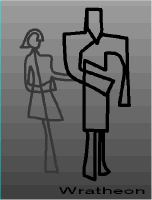Cubism is a more modern art movement
in which forms are abstracted by using an analytical approach to the object
and painting the basic geometric solid of the subject. Cubism is a backlash
to the impressionist period in which there is more of an emphasis of light
and color. Cubism itself follows Paul Cezanne statement that "Everything
in nature takes its form from the sphere, the cone, and the cylinder."
in which these 3 shapes are used to depict the object of the painting. Another
way that the cubist expressed their painting was by showing different views
of an object put together in a way that you can not actually see in real
life. The Cubism period stated in Paris in 1908, reached its peak in 1914,
and continued into the 20's. The leaders in the cubist era were Pablo Picasso
and Georges Braque . Other painters from this period include Fernand Leger,
Francis Picabia, and Roger De La Fresnaye.
Cubism was developed by Pablo Picasso (Spanish, 1882-1973) and Georges Braque
(French, 1882-1963), who were greatly inspired by African sculpture, by
painters Paul Cézanne (French, 1839-1906) and Georges Seurat (French,
1859-1991), and by the Fauvists. |
|
Braque, Georges (1882-1963)
Duchamp, Marcel (1887-1968)
Gris, Juan (1887-1927)
Leger, Fernand (1881-1955)
Picasso, Pablo (1882-1973)
Next
|
|
|
|
|
Alfred Henry Maurer, Father and Son, c.1930, oil
on canvasboard
|
Fernand Léger (French, 1881-1955), Woman
with a Cat, 1921
|
|


